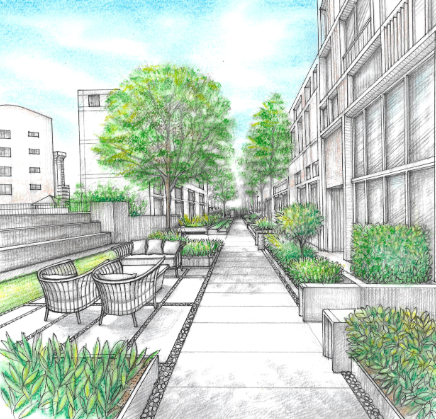Landscape Architecture Sketching: Bringing Ideas to Life
Landscape architecture sketching is a crucial skill for professionals in the field, enabling them to visualize concepts and communicate ideas effectively. Whether you’re a seasoned landscape architect or a budding enthusiast, honing your sketching skills can greatly enhance your ability to design engaging outdoor spaces. This article explores the significance of landscape architecture sketching and provides practical tips to elevate your technique.
The Importance of Sketching in Landscape Architecture
Sketching is more than just a preliminary step in the design process; it’s an essential tool for exploration and creativity. It allows architects to quickly capture their ideas, experimenting with layouts, plant placements, and spatial relationships. A well-executed sketch can convey emotions and atmospheres that technical drawings often miss. Moreover, sketches can be invaluable when engaging with clients, as they help convey complex concepts in a straightforward manner. Mastering this skill can elevate your designs and improve your communication.
Tips for Improving Your Sketching Skills
To become proficient at sketching, practice is key. Start by setting aside a dedicated time to draw regularly. Focus on sketching from real-life scenes—parks, gardens, or even urban landscapes. Observing your surroundings enhances your understanding of proportion, scale, and composition. Don’t hesitate to try different media, like pencils, ink, or watercolor, to find what best suits your style. Joining a sketching group or online community can also provide motivation and constructive feedback, further sharpening your skills.
Incorporating Style and Personality into Your Sketches
Your sketches should reflect your unique touch and style. Don’t shy away from adding personal elements or playful details that make your work stand out. Explore various sketching techniques, such as hatching or stippling, to add depth and texture. Incorporating color can also breathe life into your sketches, helping to convey the atmosphere you envision for the space. Ultimately, letting your personality shine through in your sketches makes your designs more engaging and memorable.
Conclusion
In conclusion, landscape architecture sketching is a vital skill for anyone involved in creating outdoor spaces. By honing your sketching abilities, you can communicate your ideas more effectively and explore your creativity. Take the first step today—grab a sketchbook and start drawing! With practice and passion, you’ll be well on your way to becoming a master sketcher in landscape architecture.

